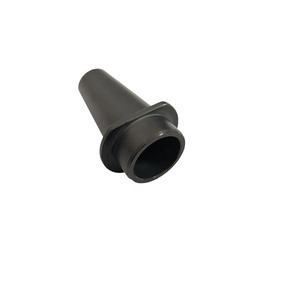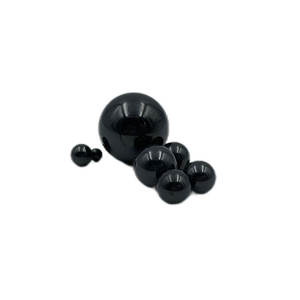Discover Premium Ceramic Products | Durability & Elegance United | Advanced Ceramics
PRODUCT PARAMETERS
Description
Introduction of Boron Carbide Ceramics
Boron carbide ceramics is an inorganic, non-metallic material with carbon and boron as its main components, and its chemical formula is B4C. Since its discovery in the early 20th century, this material has attracted a great deal of attention because of its unique physical and chemical properties. Boron carbide ceramics have an extremely high hardness, second only to diamond and cubic boron nitride, which makes it important in the field of wear-resistant materials. It also exhibits excellent corrosion resistance, high-temperature stability and low-density properties, attributes that make it ideal for the manufacture of bullet-proof vests, nozzles, bearings and other mechanical components that require high wear resistance. Boron carbide ceramics can also be prepared in a variety of shapes and sizes through different processes to meet the needs of different industries.
Characteristics of Boron Carbide Ceramics
Boron carbide ceramics are known for their excellent performance characteristics, starting with their ultra-high hardness and strength, which makes them resistant to severe abrasion and scratching, making them ideal for use in cutting tools and abrasives. Secondly, the material possesses excellent chemical stability and is less likely to react with chemicals such as acids and alkalis, even in extreme environments, making it widely used in certain key components in the chemical industry. In addition, the superior thermal stability of boron carbide ceramics and their ability to maintain structural and property stability at extremely high temperatures makes them one of the key materials in the aerospace and nuclear industries. Finally, it is worth mentioning its lightweight properties, which, due to its low density, make boron carbide ceramics an ideal option for application scenarios that require light weight but high strength. Together, these characteristics give boron carbide ceramics a wide range of applications.
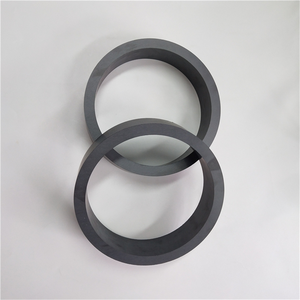
(Ultra Hard Boron Carbide Ceramic Hexes)
Specification of Ultra Hard Boron Carbide Ceramic Hexes
Ultra Hard Boron Carbide Ceramic Hexes deliver leading efficiency in demanding industrial setups. These hexes make use of boron carbide, a material recognized for extreme hardness and sturdiness. The structure consists of boron and carbon atoms prepared in a rigid framework. This configuration develops a ceramic harder than a lot of steels and conventional ceramics.
The hexes flaunt a solidity rating of 9.3 on the Mohs range. This makes them effective versus abrasion and wear. Their density remains low, around 2.52 g/cm FIVE. This mix of firmness and light weight fits applications requiring toughness without bulk. The melting point surpasses 2000 ° C, guaranteeing stability in high-temperature settings.
Mechanical homes consist of high compressive stamina. They hold up against stress over 2900 MPa without cracking. Crack sturdiness gets to 3.5 MPa · m ¹/ TWO, implying they withstand cracking under impact. These attributes make them dependable for durable machinery parts or safety equipment.
Thermal conductivity actions 30-42 W/m · K. This helps dissipate warm quickly throughout procedures. Thermal growth continues to be low, preventing warping under temperature level shifts. Electrical insulation homes include worth for usage in electronic or high-voltage tools.
Applications span several sectors. In defense, they work as armor elements due to bullet-resistant top qualities. Industrial uses include nozzles, seals, and cutting tools. The hexes maintain sharp edges longer than steel alternatives. Wear-resistant linings in mining equipment benefit from their abrasion resistance.
Customization alternatives cover dimensions from 5 mm to 50 mm in side size. Surface coatings range from rough to polished, based on customer requirements. Tolerances remain tight, within ± 0.1 mm, ensuring specific fits.
Ecological resistance is strong. The hexes stand up to acids, antacid, and corrosive gases. They perform in moist or chemically harsh settings without degrading. Oxidation resistance remains high also at raised temperature levels.
Conformity meets global requirements like ISO 9001 and ASTM C1161. Examining includes hardness verification, thickness checks, and fracture strength analyses. Quality control makes certain consistency across batches.
Packaging utilizes shock-resistant products to prevent transportation damage. Each device undertakes examination before shipment. Lead times vary by order dimension, with common sets prepared in 4-6 weeks. Mass orders receive discounted rates. Technical assistance is readily available for integration questions or efficiency troubleshooting.
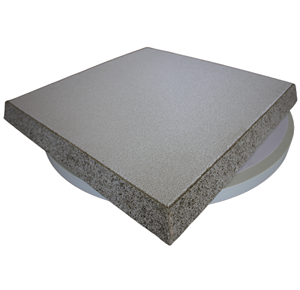
(Ultra Hard Boron Carbide Ceramic Hexes)
Applications of Ultra Hard Boron Carbide Ceramic Hexes
Ultra-hard boron carbide ceramic hexes are utilized in numerous industries. Their extreme firmness makes them beneficial for high-wear scenarios. Military applications are common. Body armor plates use boron carbide hexes. They stop bullets and shrapnel much better than steel. Army automobiles add ceramic hexes to exterior panels. This shields versus explosions and projectiles.
Factories use boron carbide hexes in reducing devices. The product stays sharp under hefty usage. Drills and blades last longer. Mining equipment gain from this. Crushing hard rocks wears down equipment less.
Rough products commonly include boron carbide. Sandblasting nozzles made from ceramic hexes deal with rough particles. They outlive steel nozzles. Grinding wheels with boron carbide cut metals faster. Surface area finishing ends up being much more reliable.
Atomic power plants require boron carbide. The ceramic hexes soak up neutrons. This regulates nuclear reactions. Reactor protecting usages boron carbide layers. Radiation direct exposure decreases. Workers remain much safer.
Aerospace components face extreme conditions. Boron carbide hexes manage high warmth. Spacecraft thermal barrier use them. Jet engine components stand up to disintegration better. Fuel efficiency improves.
Sports gear producers embrace boron carbide. Bicycle brake pads with ceramic hexes stop faster. Motorcycle riders get better control. The pads function well in rainfall or dust.
Clinical devices utilize boron carbide layers. Surgical blades remain sharper much longer. Implants last much better inside the body. The material does not react with cells.
Electronic devices manufacturing demands specific cutting. Boron carbide hexes trim circuit boards cleanly. Integrated circuits get exact shapes. Waste product reduces.
Chemical plants encounter harsh substances. Shutoffs and pumps with boron carbide parts resist damage. Leaks occur much less. Upkeep expenses go down.
The auto market utilizes ceramic hexes in brake systems. High-speed vehicles need reliable stopping power. Racing cars depend upon boron carbide longevity. Day-to-day autos last longer in between fixings.
Boron carbide ceramic hexes resolve troubles across areas. Their strength and adaptability make them essential.
Company Introduction
Advanced Ceramics founded on October 17, 2014, is a high-tech enterprise committed to the research and development, production, processing, sales and technical services of ceramic relative materials and products.. Since its establishment in 2014, the company has been committed to providing customers with the best products and services, and has become a leader in the industry through continuous technological innovation and strict quality management.
Our products includes but not limited to Silicon carbide ceramic products, Boron Carbide Ceramic Products, Boron Nitride Ceramic Products, Silicon Carbide Ceramic Products, Silicon Nitride Ceramic Products, Zirconium Dioxide Ceramic Products, Quartz Products, etc. Please feel free to contact us.(nanotrun@yahoo.com)

Payment Methods
T/T, Western Union, Paypal, Credit Card etc.
Shipment Methods
By air, by sea, by express, as customers request.

5 FAQs of Ultra Hard Boron Carbide Ceramic Hexes
What makes boron carbide ceramic hexes ultra-hard? Boron carbide has a unique atomic structure. Strong covalent bonds hold the atoms tightly. This creates extreme hardness. It ranks third hardest globally after diamond and cubic boron nitride. The material resists wear even under heavy stress.
Where are boron carbide ceramic hexes typically used? These hexes work in high-wear environments. Industries like defense use them for body armor plates. Factories fit them into machinery parts needing abrasion resistance. They also serve in cutting tools or nozzles handling corrosive materials.
Can boron carbide hexes handle high temperatures? Yes. They withstand temperatures up to 1,800°C. Oxidation may occur above 500°C in air. Protective coatings sometimes fix this. Thermal shock resistance stays lower than metals. Sudden temperature changes risk cracking.
How do I maintain boron carbide hexes? Avoid impacts or rough handling. Their hardness makes them brittle. Clean them with mild soap and water. Harsh chemicals risk surface damage. Regular checks for cracks or chips help extend their life.
Are boron carbide hexes cost-effective? Initial costs run higher than steel or alumina ceramics. Long-term savings come from durability. Less frequent replacements cut downtime and labor costs. They suit applications where failure risks outweigh material expenses.
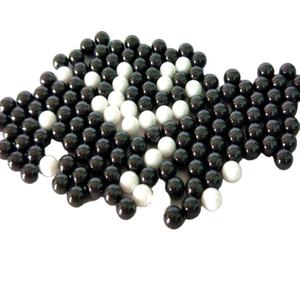
(Ultra Hard Boron Carbide Ceramic Hexes)
REQUEST A QUOTE
RELATED PRODUCTS
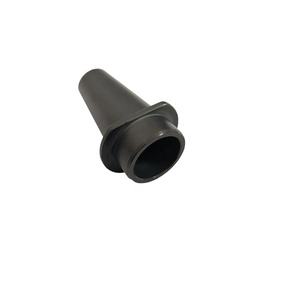
99.9% 3N high purity B4C powder Boron carbide powder microns F2000 for Armor Ceramics

Exceptional Hardness Boron Carbide B4C Ceramic Square Bar
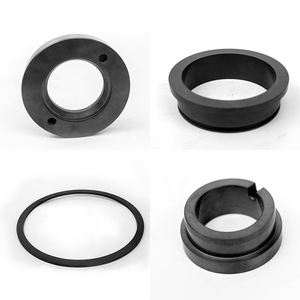
Customized Hexagon Boron Carbide Ceramic Plate B4C Ceramic Tile
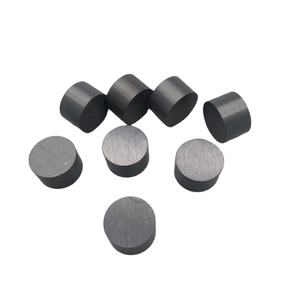
Eco-Friendly Boron Carbide 99.9% B4C Tetraboron Carbide Ceramic Target for Chemical Sensors
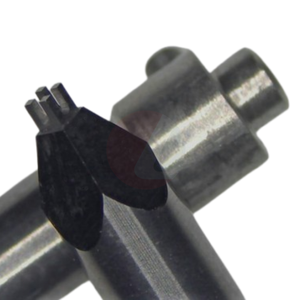
High Purity Boron Carbide Ceramic Balls Grinding Media Neutron Absorbing Sphere CAS#: 12069-32-8 Customized Nuclear-grade B4C
